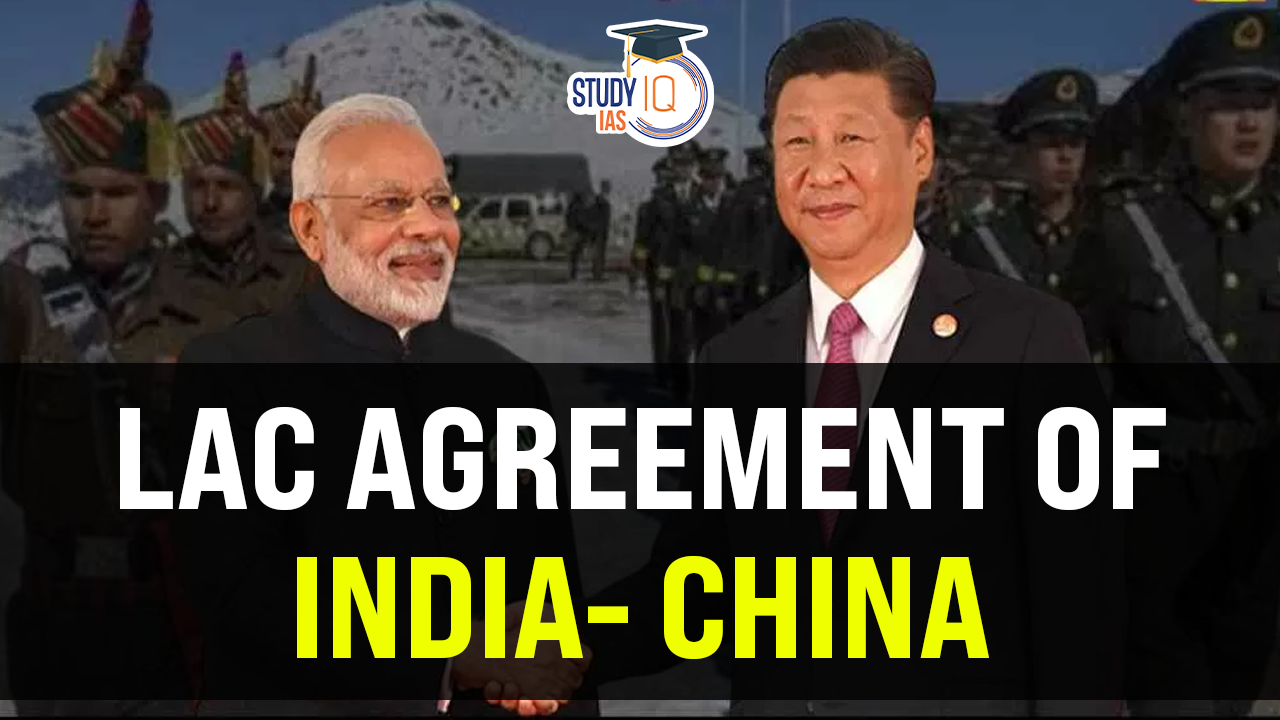Table of Contents
Context: India and China have reached an agreement to resume patrolling at key friction points along the Line of Actual Control (LAC) in eastern Ladakh.
More in News
- The latest development comes after multiple rounds of military talks that have already led to disengagement at several other flashpoints along the LAC, such as Pangong Tso, Gogra, and Hot Springs.
- However, there is uncertainty about whether this disengagement includes all disputed areas, including older disputes at Demchok and Depsang in eastern Ladakh, or only those contested since 2020.
LAC Agreement Between India And China Overview
- Date of Agreement: Announced on October 22, 2024.
- Key Players:
- India: External Affairs Minister S. Jaishankar, Foreign Secretary Vikram Misri.
- China: No official comments at the time of the announcement.
- Background: The agreement marks a significant breakthrough after four years of military standoff along the Line of Actual Control (LAC) that began with skirmishes in May 2020.
Key Points of the India-China Border Agreement
- Patrolling Rights: The agreement allows both countries to resume patrolling arrangements as they were in 2020.
- Disengagement Completion: Jaishankar confirmed that the disengagement process with China has been completed, indicating a return to pre-2020 border conditions.
- Diplomatic Engagement: The agreement is a result of extensive diplomatic and military discussions over several weeks.
About Border Dispute with China
- There is no mutually agreed Line of Actual Control (LAC).
- LAC is divided into three sectors: The western sector (Ladakh), Middle Sector (Himachal Pradesh and Uttarakhand) and the Eastern Sector (Arunachal Pradesh and Sikkim).
- Certain areas along the LAC are perceived differently, and China reportedly has been building infrastructure on its side.
- It is part of the Chinese salami-slicing tactic or Cabbage strategy.
- It is a strategy of acquiring new territories, at the expense of its neighbours.
| India-China Border Dispute Sector-wise |
|
Historical Context
2020 Standoff:
- Triggered by a clash at Pangong Lake, followed by a deadly encounter in Galwan Valley that resulted in casualties on both sides.
- Led to increased military deployments, with around 60,000 troops stationed by each side along the border.
Geopolitical Implication of the Recent Agreement
- The agreement reflects a temporary easing of tensions, but strategic distrust remains.
- India’s ability to negotiate demonstrates its growing diplomatic strength.
- The agreement is part of India’s careful approach to managing its China relations while projecting regional stability.
- India’s dependence on Chinese supply chains is a critical concern.
Role of Russia
- Diplomatic Channel: The agreement suggests that Russia may have acted as a diplomatic channel, facilitating discussions between India and China.
- BRICS Summit Influence: The upcoming BRICS Summit provides a platform for direct engagement between Modi and Xi, potentially easing tensions further.
Challenges Ahead
- Trust Restoration: Experts highlight the challenge of rebuilding trust after years of tension, emphasizing that both militaries will need to manage mutual animosities.
- Implementation of Agreement: The real impact of the agreement will depend on its implementation on the ground and how both nations navigate their complex relationship moving forward.
Conclusion
The recent India-China border agreement represents a crucial step toward stabilizing relations between the two nations after years of conflict. While the return to pre-2020 conditions is a positive development, the long-term effects will depend on ongoing dialogue, mutual trust, and the geopolitical context, particularly in light of Russia’s potential role in fostering diplomacy.


 GPS Spoofing and Its Impact in India: A ...
GPS Spoofing and Its Impact in India: A ...
 Amrit Gyaan Kosh Portal: A Comprehensive...
Amrit Gyaan Kosh Portal: A Comprehensive...
 UpLink Initiative: Launched by World Eco...
UpLink Initiative: Launched by World Eco...





















